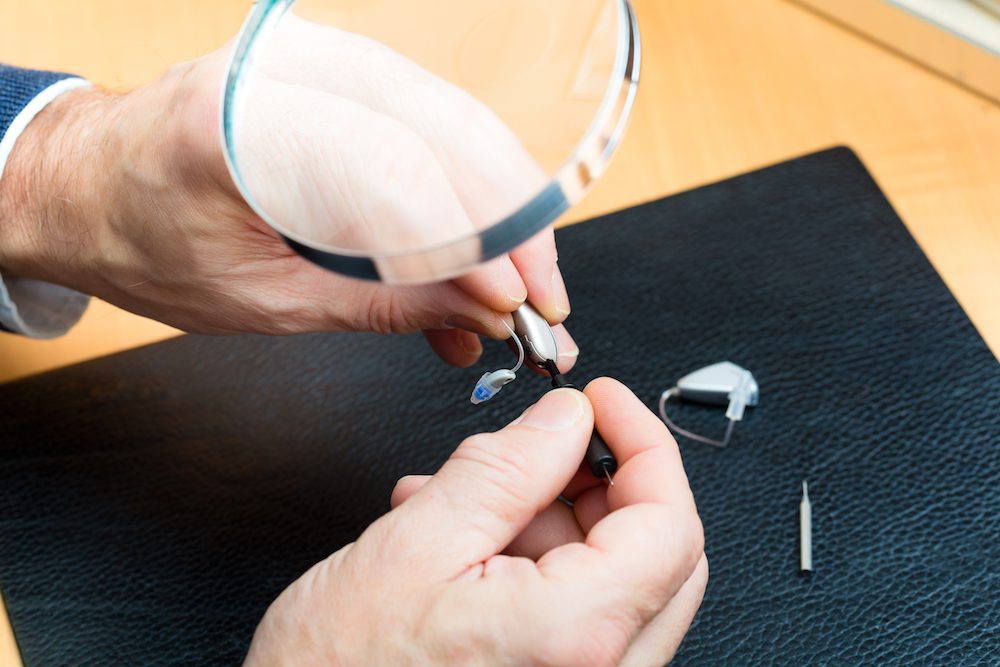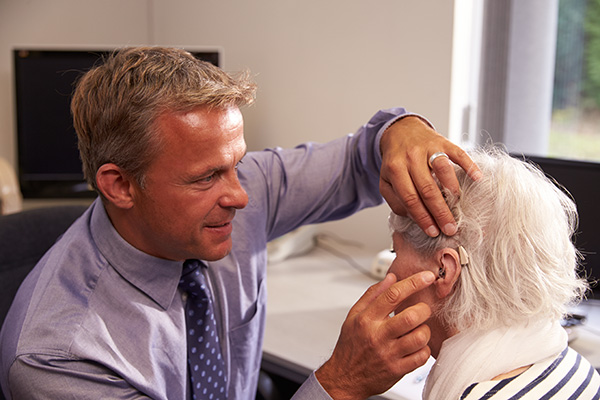3 Signs That You Are Wearing an Ill-fitting Hearing Aid
Manufacturers design most hearing aids to provide a bespoke fit for the
Now Offering the Latest In Hearing Innovation: The Oticon Intent Learn More

By: admin | February 15, 2023
Do you experience a high-pitched ringing sound when wearing your hearing aid? Do you wish it would just go away? If this is something that you’re dealing with, then keep reading! In this blog post, we’ll walk through the common causes of hearing aid feedback and provide troubleshooting tips to help resolve any issues.
Of course, we can’t guarantee all your hearing woes will be solved by the time you reach the end, but at least there should be some palpable relief – not only from that annoying buzzing noise but also from knowing exactly where to start when tackling a problem with your hearing aids!
Feedback is a common and unpleasant sound that people with hearing aids may experience. It happens when sound from the hearing aid receiver or speaker gets amplified repeatedly, causing it to create a high-pitched loop. The most common symptom of feedback is a buzzing or whistling sound, but you may also hear an echo or other unpleasant sounds if your hearing aids provide too much amplification.
When trying to determine whether the feedback is occurring, you can perform two simple tests: the first test focuses on changing the position of your aid by moving it slightly away from your ear canal; if this stops the noise, then feedback may have been at play. The second test involves manually covering the sound receiver with your finger; if the noise goes away, it might also be due to feedback.
Feedback is the uncomfortable sound of a continuous, loud whistling or squeal that may occur when hearing aids are used. It typically occurs when an amplified sound from the hearing aid’s speaker makes its way back into the microphone and amplifies itself again and again. The most common feedback causes can include wearing a device too loosely, an inappropriate tubing connection, a clogged wax filter or even simply placing your finger on the phone receiver. Fortunately, there are several ways you can tell if your hearing aids are causing feedback with regular check-ups and daily maintenance.
For example, having your hearing instrument specialist inspect the software settings of your hearing devices before each appointment, performing regular cleaning with proper tools, replacing filters at least twice a year, maintaining appropriate size tips or domes of the receiver and being mindful not to cover any part of the microphone while in use. Taking steps such as these will help avoid feedback disruption and allow you to experience better auditory clarity with your hearing aids!
When it comes to hearing aids, you don’t have to worry about troubleshooting feedback – with a few essential tips, you’ll be able to identify and address issues quickly. First of all, take a look at the fit of your hearing aid – if it’s too small or too big for your ear canal, feedback can definitely occur. Also, take a look at your environment – are there any potential sources of interference nearby?
If so, consider moving further away from them. Lastly, check your device’s volume and ensure it isn’t too high, as this will also cause feedback. Following these steps should help you resolve any challenges you have with feedback so that you can continue enjoying clear and accurate sound through your hearing aid.
Keeping your hearing aids in good condition is essential to ensure uninterrupted hearing. As regular maintenance, make sure to remove and clean them with a slightly damp cloth after each use. Keep the microphone port clear from earwax and debris using a cleaning brush and use the provided wax guard when instructions allow for it. Periodically check if the wires or tubes are clogged or damaged, replace any worn-out parts immediately for optimal sound quality and to minimize feedback occurrence.
Furthermore, avoid exposing your hearing aids to excessive moisture as that could cause damage. Store them in a clean, airtight case when not wearing them. Proper maintenance should be done regularly to prevent hearing difficulties resulting from malfunctioning hearing aids, so take appropriate care of your device!
If you’re having trouble with hearing aid feedback, don’t hesitate to call a hearing instrument specialist. At Sound Choice Hearing, we can help you find the perfect setting for your hearing aids and ensure they work properly. We understand how important it is to have clear sound, so give us a call today at (505) 565-7960 and let us help you get back to enjoying life without worrying about feedback from your hearing aids.

Manufacturers design most hearing aids to provide a bespoke fit for the
By: admin | June 14, 2022

Many people, including some professionals, associate hearing loss with
By: admin | May 30, 2022

If you believe that you have hearing loss, you may have considered whether
By: admin | April 24, 2022
